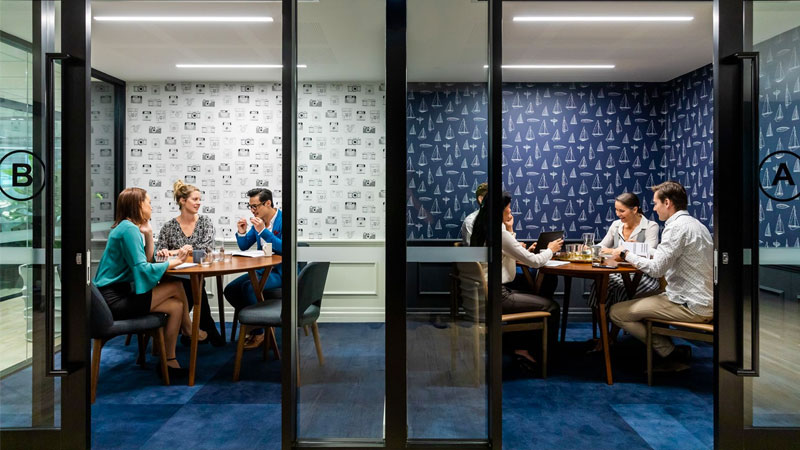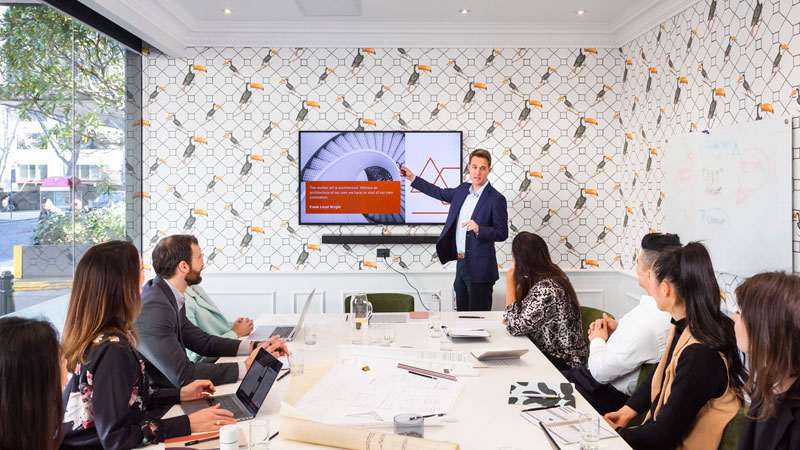Return to Flexible Offices Will Restore City Life
The pandemic has altered the working world with flexible and remote working options very much the new ways of working moving forward.
While the incentive of flexible work schedules may be here to stay, the need and want for a workspace in a desirable centre city location is still a big consideration for emerging and current employees and employers alike.
According to a recent study by the Property Council of Australia, almost every major city in Australia has seen CBD workers returning to their workspaces in higher numbers month upon month.
Across October and November, Perth, Canberra and Brisbane recorded the largest increases of workers returning to their CBD spaces compared to months previous, with the only exception on the decline being Melbourne.
Industry experts predict the return of the Australian workforce to the nation’s CBDs is a crucial factor in determining the future of our cities and the physical, cultural and economic landscape.
“As Australia now heads confidently towards widespread vaccinations and we see an overall decline in Covid-19 cases and outbreaks nationwide, the momentum to return to the office has continued to build,” Christie Spaces national asset manager Michael Conroy said.
“Our CBD districts are experiencing a revival in activity and economic stimulation.

“With rental prices still recovering from the recent economic downturn, now is the time to capitalise and secure a central workspace and experience all the benefits of a premium location at a lower cost,” Conroy said.
“The competitive advantage of an inner-city location can immediately enact strategic decisions across the structure of your business.
“On a very basic level, a recognisable and centrally located base of operations can be a reputational advantage over competitors.”
A location that is closer, more accessible and more recognisable to a client or potential employee can be a more attractive option and increase brand awareness.
Industry specific and connected locations also come with the advantage of physical closeness to other contacts or clients allowing you to act quickly or dynamically and can immediately factor you in to compete for potential future business.
A recognisable location can also help with the recruitment and retainment of employees, especially the emerging younger, millennial workforce talent.
It’s estimated that in Australia alone, millennials will make up 75 per cent of the workforce in 2025, so it’s no wonder that 79 per cent of Australian CEO’s polled said their biggest concern is how to attract and retain this new generation of workers.
“On track to hold a significant influence over the future of work, it’s more important than ever to understand and gear towards the understanding, expectation, motivations and attitudes of this working generation,” Conroy said.
“Socialising as a business with your team, or with your clients at cafés, restaurant and bars also comes with the territory of a CBD workspace.
“With social hubs on your doorstep, your business will effectively have built-in social features, with the instant ability to create a friendly and social workplace culture.
“Establishing this kind of workplace culture is obviously a distinct advantage for employees, but also has positive effects on workplace cohesion and teamwork.”
As financial uncertainty still remains, flexible workspace options with shorter tenancy options and inclusive rates are now becoming a more regular business decision for SME’s and larger corporates to seek out workspaces.
These flexible workspaces are concentrated within city centres and are increasingly providing an affordable CBD address for many Australian businesses.
Co-working and flexible office space is now on track to account for 12 per cent of all office space by 2030, and set to continue to grow beyond that in the Australian market.

“Previous case studies have demonstrated that while there may be immediate financial incentives to relocate to outer-city or suburban locations; physically distancing yourself from the cultural and industrial hub can affect employee retention, partner and client relationships and alienate you in a separate industry-geared neighbourhood,” Conroy said.
“In conjunction with remaining culturally vibrant and connected, your location can also maintain your relevancy in new ways of working.
“As the demographics of the working population within Australia shift, so to do the main industry players.”
Urban theorist Richard Florida said that with the growth of the knowledge economy, the “creative class” are becoming more and more influential in business prosperity.
Referred to as “knowledge workers”—this workforce comprises of software developers, product managers, copy writers, etc; and they are especially prone to choosing connected and central workplaces due to the collaborative and technological nature of their work.
Not only does this new creative class need a highly collaborative environment, but studies have demonstrated the dynamic and social nature of a centralised workplace is also crucial in the performance of these knowledge workers—particularly in areas of innovation and productivity.
“When we look at the future of the work in Australia—including the emerging demographics, the shift in importance of certain roles and change in workers motivation towards culture and connectivity—every savvy business should be considering the benefits of a central and flexible CBD workspace,” Conroy said.
The Urban Developer is proud to partner with Christie Spaces to deliver this article to you. In doing so, we can continue to publish our free daily news, information, insights and opinion to you, our valued readers.













